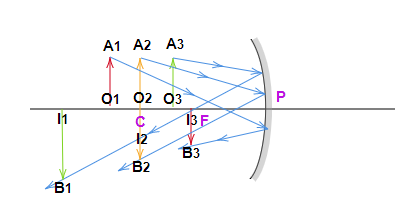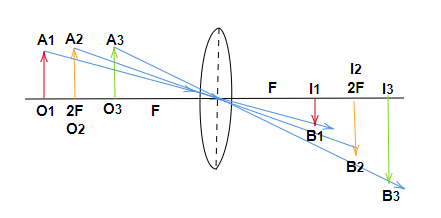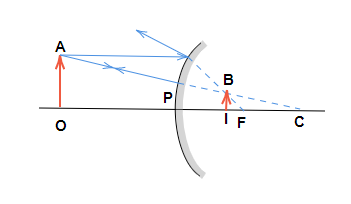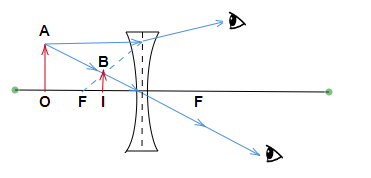
How do you tell if an image is upright or inverted?
Answer
140.7k+ views
Hint: The images formed by spherical surfaces can be of two types, that is real and inverted or virtual and erect. The images formed by the converging of light rays from an object form real and inverted images. Similarly, the image which is formed by the diverging light rays from the object will be virtual and erect.
Complete answer:
* If the image is real in the case of mirrors, it will always be inverted. Also in case of mirrors if the image distance is negative hence the image is inverted. These images will form on the same side of the mirror.
* If the image is real in the case of lenses, it will always be inverted. Also in case of lenses if the image distance is positive hence the image is inverted. These images will form on the opposite side of the lens.


* If the image is virtual in the case of mirrors, it will always be upright. Also in case of mirrors if the image distance is positive hence the image is upright. These images will form on the opposite side of the mirror.
* If the image is virtual in the case of lenses, it will always be upright. Also in case of lenses if the image distance is negative hence the image is upright. These images will form on the same side of the lens.


Note: The image formed by the convex mirror and concave lens will always be virtual and erect wherever the object is placed between \[\infty\] and P. The concave mirror and convex lens will form real and inverted images with varying sizes according to the object distance (u) and they can also form virtual images
Complete answer:
* If the image is real in the case of mirrors, it will always be inverted. Also in case of mirrors if the image distance is negative hence the image is inverted. These images will form on the same side of the mirror.
* If the image is real in the case of lenses, it will always be inverted. Also in case of lenses if the image distance is positive hence the image is inverted. These images will form on the opposite side of the lens.


* If the image is virtual in the case of mirrors, it will always be upright. Also in case of mirrors if the image distance is positive hence the image is upright. These images will form on the opposite side of the mirror.
* If the image is virtual in the case of lenses, it will always be upright. Also in case of lenses if the image distance is negative hence the image is upright. These images will form on the same side of the lens.


Note: The image formed by the convex mirror and concave lens will always be virtual and erect wherever the object is placed between \[\infty\] and P. The concave mirror and convex lens will form real and inverted images with varying sizes according to the object distance (u) and they can also form virtual images
Recently Updated Pages
Young's Double Slit Experiment Step by Step Derivation

Difference Between Circuit Switching and Packet Switching

Difference Between Mass and Weight

JEE Main Participating Colleges 2024 - A Complete List of Top Colleges

JEE Main Maths Paper Pattern 2025 – Marking, Sections & Tips

Sign up for JEE Main 2025 Live Classes - Vedantu

Trending doubts
JEE Main 2025 Session 2: Application Form (Out), Exam Dates (Released), Eligibility, & More

JEE Main 2025: Derivation of Equation of Trajectory in Physics

A point charge + 20mu C is at a distance 6cm directly class 12 physics JEE_Main

JEE Main Exam Marking Scheme: Detailed Breakdown of Marks and Negative Marking

Learn About Angle Of Deviation In Prism: JEE Main Physics 2025

Electric Field Due to Uniformly Charged Ring for JEE Main 2025 - Formula and Derivation

Other Pages
JEE Advanced Marks vs Ranks 2025: Understanding Category-wise Qualifying Marks and Previous Year Cut-offs

JEE Main 2025: Conversion of Galvanometer Into Ammeter And Voltmeter in Physics

Degree of Dissociation and Its Formula With Solved Example for JEE

Electric field due to uniformly charged sphere class 12 physics JEE_Main

Dual Nature of Radiation and Matter Class 12 Notes: CBSE Physics Chapter 11

Formula for number of images formed by two plane mirrors class 12 physics JEE_Main




